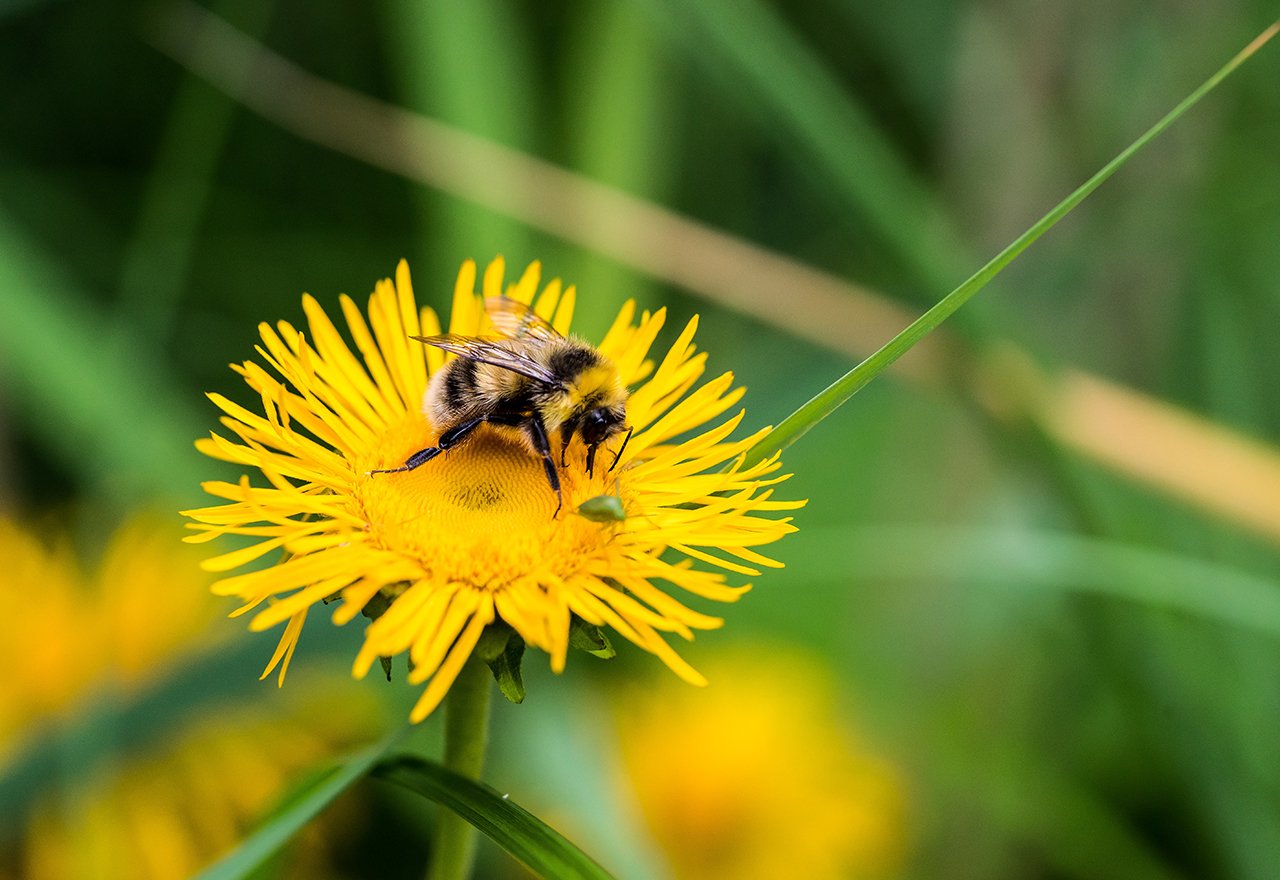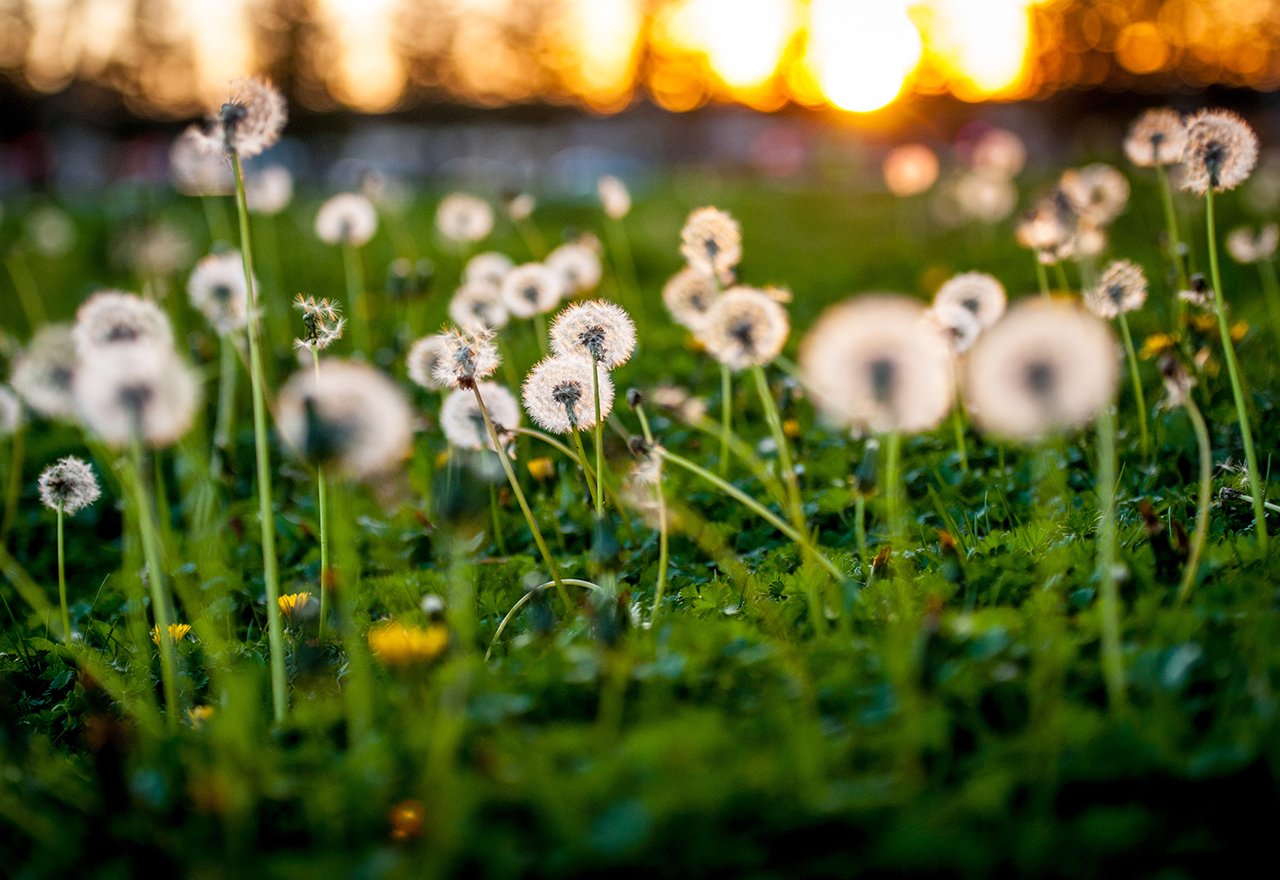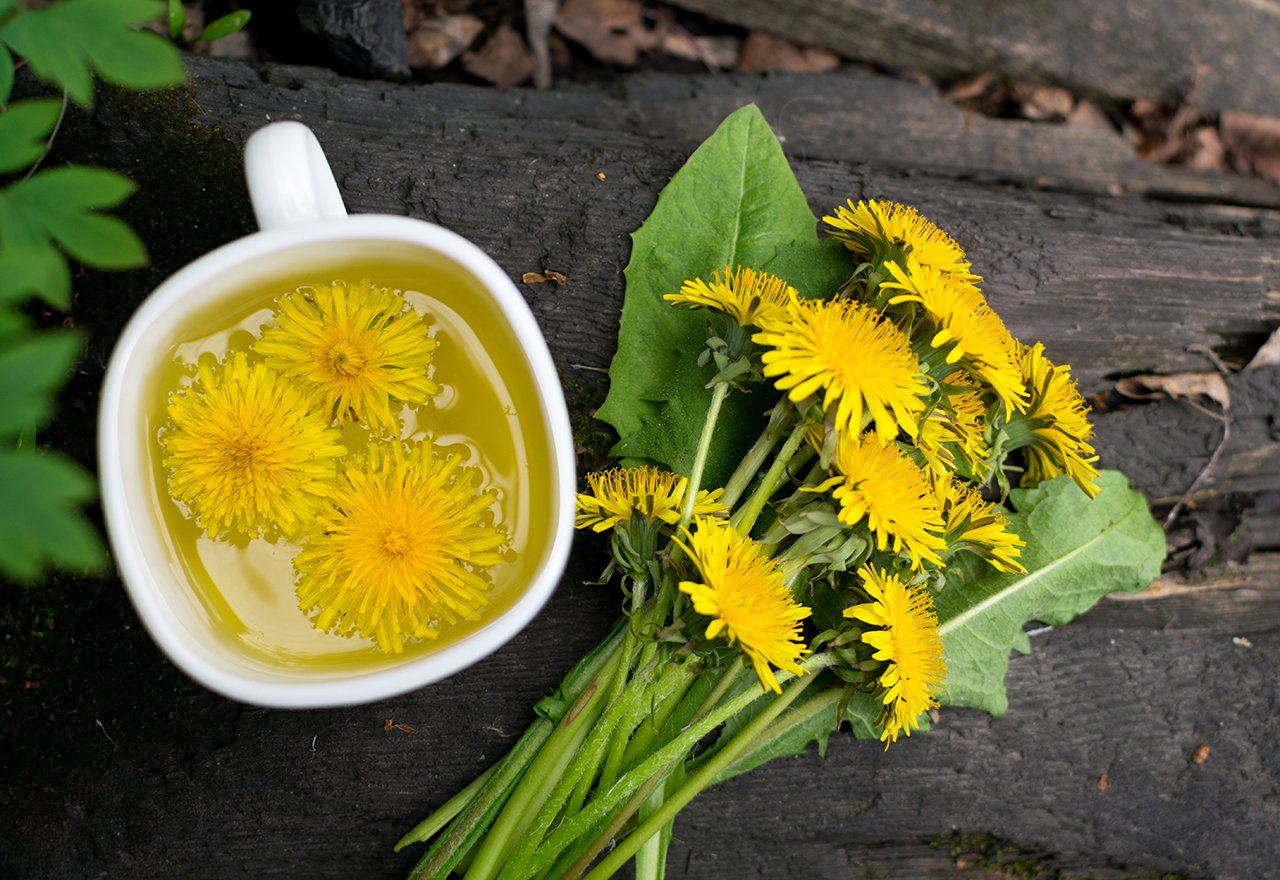Dandelions Don’t Just Benefit Pollinators
by Maureen Wise, on June 1, 2022

A major driving factor in our business at Good Nature Organic Lawn Care is to lessen the environmental impact of managing turfgrass. We don’t want kids and pets to be exposed to poisons that are typically used to kill “pests” like Dandelions. We want to help pollinators thrive. We don’t want our waterways to be choked by algae caused by over-fertilization. We never want those fertilizers to hit the waterways to begin with because they are toxic to aquatic life. And so we work with customers to make Earth-friendly choices that also keep their grass and soil healthy. Sometimes, but not always, that means overlooking some weeding - including dandelions (Taxaracum officinale). These uninvited, prolifically reproducing yellow-flowed plants are great for pollinators and can also be a healthy addition to your diet.
The deep grooved saw-edged leaves of dandelions grow in a rosette pattern. Each stem produces an individual disk-shaped yellow flower. After blooming, the flower produces a globe-shaped seed head that contains up to 200 seeds. Each plant can grow about ten flowers each Summer and bloom throughout the season. The plants are perennial because taproots often survive over the winter.
For Pollinators, Birds & Animals
Dandelions bloom early in the Spring and are an important nectar source for bees and butterflies when other flowers aren’t yet blooming. These same pollinators will help veggie plants and annual flowers reproduce later in the Summer but still need a food source before gardeners get to work.
Additionally, some bird species eat dandelion flowers, buds, and seeds. Hummingbirds make use of the fluffy seeds to build their nests. Sulphur, Admiral, and Comma butterflies often frequent dandelion flowers as well. Rabbis, deer, and livestock such as pigs and goats eat dandelions.

For You
More nutritious than broccoli or spinach, dandelions might be considered wild vegetables. Although they are rarely grown widely commercially, dandelion greens are on the menu in many restaurants. In the 19th century in England, other greens such as lettuce and endive were in low supply, so grocers and market stalls sold dandelion greens. It’s very unlikely that you’ll find the greens for sale at your local grocery store and so harvesting them from your garden and yard is just fine. Be sure that you have sprayed no fertilizers or weed killers on the plants and thoroughly wash them to remove dirt and insects.
Each part of the dandelion plant is edible although all parts are a bit sweeter earlier in the spring. Greens are sweetest and most tender before they produce flowers but certainly are still tasty throughout the summer. Greens can be used in salad or sautéed. They contain high levels of calcium, potassium, and iron. Flowers should be eaten directly after picking because they quickly close up. The roots can be cut up and eaten like turnips or made into tea. When stems are cut, they produce a white liquid that contains latex and so people with latex allergies should not consume dandelions.

Consuming dandelions has a long list of health benefits. There have been many scientific studies that demonstrate the positive effects of consuming the plant and its extracts. Dandelions contain beta-carotene, an antioxidant that helps reduce cell damage. Studies have found that rabbits that consumed dandelion roots and leaves reduced their cholesterol levels. The plants also contain some compounds that may help regulate blood sugar and help reduce inflammation. Dandelions’ high levels of potassium may help lower blood pressure and their levels of chlorogenic acid may help reduce fat absorption. Studies have also found that dandelions slowed the growth of colon cancer, pancreatic cancer, and liver cancer. The plants have long been used as diuretics to help reduce constipation and other digestive issues. Dandelions also have antiviral and antibacterial properties that have been shown to boost the immune system. Some research has also shown that dandelions can reduce the effects of some UV light. Much of this research has been done on animals and not humans but it all shows promising positive health benefits of the yellow flowering plant.
If you’re unsure about eating dandelions in your backyard, you can purchase supplements or tea from retailers.
What do you think? Will you add some dandelion greens to your salad or stirfry this week? Let us know if you do!












